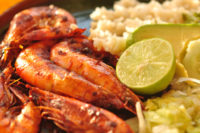After showing annual declines of 1 to 2 percent, the home-cooked meal moved into positive territory in 2000, showing a modest 0.1 percent gain. Meanwhile, the number of annual meals eaten in a restaurant per person dropped from 66 in 1999 to 64 in 2000. Likewise, Americans ordered fewer take out meals in 2000, down from 73 meals per person in 1999 to 70. Among the reasons for the decline in restaurant take-outs: Nearly every food manufacturer now offers an easy meal product that is generally less costly.
In 2000, Americans continued the trend of serving a frozen meal dish at home. In fact, such dishes comprised 11.5 percent of all suppers eaten last year, up from 9.4 percent just four years ago.
"Even in an economic downturn, people still want easy meals," said Harry Balzer, NPD vice president and author of this year's report. "During the early '90s, restaurants were the only place available for easy in-home meals...That's not so today."
The report found that one way to make home meals easier is to reduce the number of dishes served for supper. Since 1990, the size of the average supper has shrunk by eight percent, and presently averages 3.6 dishes per meal. What's being dropped? The side dish, which only accompanied 56 percent of suppers served last year. By comparison, 65 percent of suppers featured at least one side dish in 1990. The side dishes most often eliminated are vegetables, potatoes, salads and bread.
The NPD Group tracks a number of markets, including food, food service, information technology, housewares, consumer electronics and automotive products. Its 16th Annual Report on Eating Patterns in America is based on the results of more than 30 research studies conducted by NPD, including the the daily food and beverage consumption of 5000 Americans. Studies used for the report included proprietary daily food diaries, retail sales, kitchen audits, restaurant sales and appliance and cookware sales, among others. For more information about the report, contact Balzer at (847) 692-1704 or harry_balzer@npd.com.


